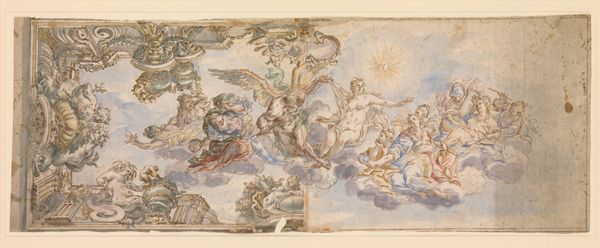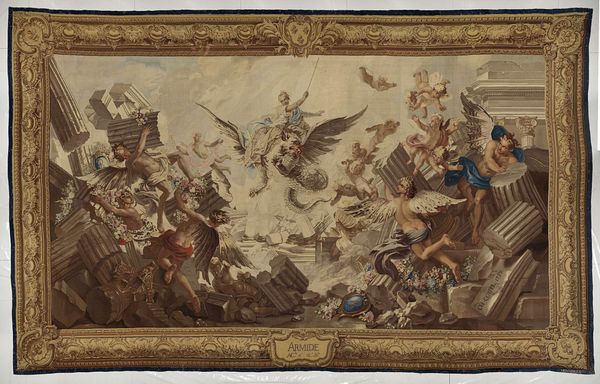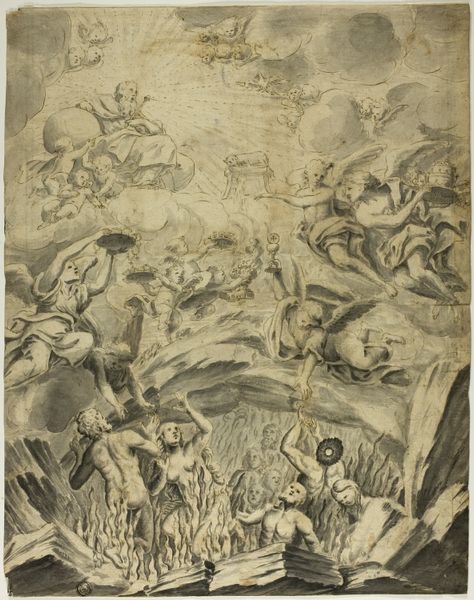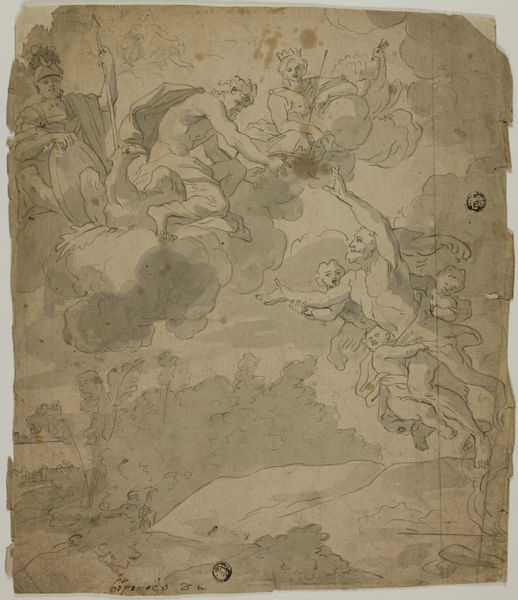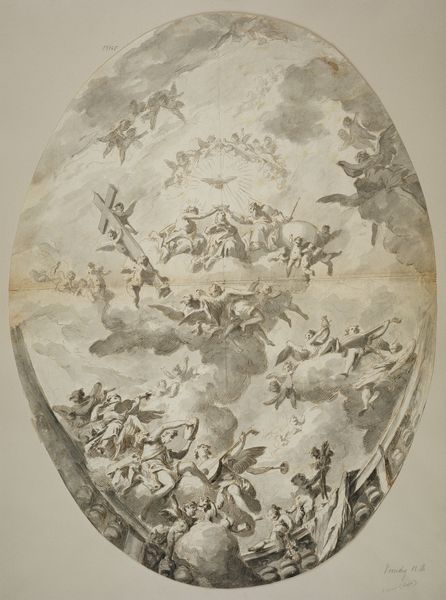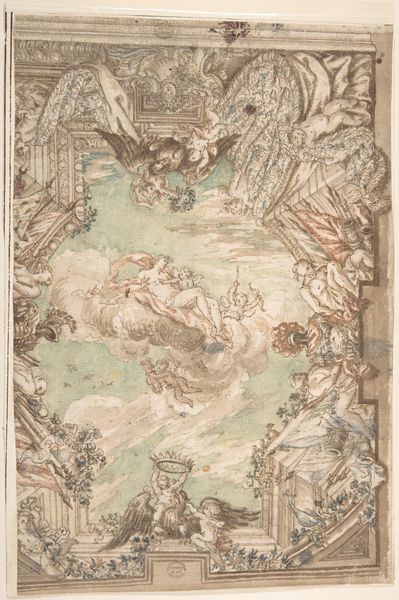
The Virgin and Saints Interceding before Christ for the Souls of the Lost 1766 - 1771
0:00
0:00
Dimensions: Sheet: ca. 26 x 17 11/16 in. (66 x 45 cm)
Copyright: Public Domain
Editor: This is "The Virgin and Saints Interceding before Christ for the Souls of the Lost" by Johann Baptist Enderle, created between 1766 and 1771, using ink, watercolor, tempera, and drawing techniques. The image is so full – the sheer number of figures floating amidst the clouds makes me feel like I'm looking up at some sort of divine chaos. What do you see in this piece? Curator: A swirling visual theology. Notice how Enderle utilizes the traditional hierarchy of space? Christ sits at the very top, a beacon of ultimate authority and judgment, while below him the Virgin Mary and saints serve as intermediaries, pleading for mercy. Think about the emotional weight carried by this act of intercession. Editor: So the composition itself is a visual representation of the Catholic belief system? Curator: Precisely. And consider the symbolic language: Keys representing authority, angelic figures denoting divine presence, and the very depiction of the damned writhing in a grid-like enclosure below. Enderle’s choice of watercolor and tempera adds to the ethereal quality. These figures aren’t merely characters, they’re conduits to a collective yearning for redemption. Editor: The "damned writhing in a grid-like enclosure" feels like its own stark, isolated symbol—separated and remote from the divine. Curator: The grid certainly speaks to imprisonment. Is that a psychological imprisonment, or spiritual? What historical memories are awakened through the piece? What continuous cultural ideas are reflected by this illustration? Enderle, as an artist during the Baroque period, employs a heightened emotionalism in religious works, and a deep investment in making tangible intangible concepts such as divine intervention. Editor: I hadn't considered the connection to the Baroque's heightened emotionalism. It adds another layer to how the artist might have wanted this image to impact viewers. Curator: It invites the viewer to reflect on faith, guilt, and the hope for salvation, themes that continue to resonate across centuries. We, ourselves, project memories and interpretations onto the iconography that Enderle constructed.
Comments
No comments
Be the first to comment and join the conversation on the ultimate creative platform.
